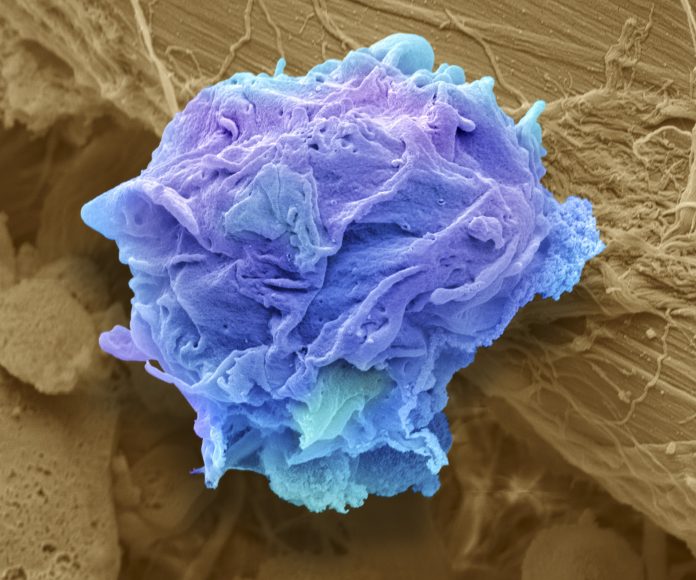
Results of the SWOG S1826 phase III clinical trial promise a shift in care in the first-line treatment of Hodgkin lymphoma, particularly for patients with stage III or IV of the disease.
This trial, which included both adult and pediatric patients, compared the efficacy and safety of two treatment regimens. The first—brentuximab vedotin (BV) combined with doxorubicin, vinblastine, and dacarbazine (BV+AVD)—is the current standard of care. The second treatment includes the same chemotherapy backbone with the addition of the immune checkpoint inhibitor, nivolumab (N+AVD), which is approved for several other cancers, including the relapse setting in Hodgkin lymphoma. This is one of the first large studies of this drug as part of the upfront treatment of Hodgkin lymphoma.
After two years of following, the progression-free survival was 92% for N+AVD compared with 83% for BV + AVD. Results are published in the New England Journal of Medicine.
Hodgkin lymphoma, although relatively rare, predominantly affects younger individuals, with a median diagnosis age of around 30. Historically, this disease was a death sentence, but advancements in treatment have significantly improved survival rates. However, challenges remain, particularly for patients with advanced-stage presentations. Jonathan Friedberg, MD, director of the Wilmot Cancer Institute and chair of the lymphoma committee of SWOG, emphasized the importance of this study: “Hodgkin lymphoma has been one of the greatest success stories in oncology,” he says. “However, there are still about 20 to 25% of patients who are not cured, and those patients need to go on and get significant toxic therapy.” In addition, 53% of pediatric patients still receive radiotherapy with BV-based therapy.
The trial was a multicenter, open-label, randomized study involving 994 patients aged 12 and above. Participants were randomly assigned to receive either the BV+AVD or N+AVD regimen. The primary endpoint was progression-free survival. Friedberg noted, “This was an exciting, really trailblazing study for several reasons. This is the first study in the United States that has included both the pediatric and the adult group of patients together.”
Historically, patients cared for by pediatricians or patients under the age of 18 were treated slightly differently from adult patients using different chemotherapy backbones as well as more radiation therapy.
The trial’s two-year progression-free survival rate was 92% for N+AVD, compared to 83% for BV+AVD. Friedberg highlighted, “The data safety monitoring committee recommended closing the trial early because the signal was so great that the new regimen had improved efficacy compared to the old regimen.” The team waited an additional year in follow-up to report these results because they wanted the results to be meaningful, Friedberg adds, “and now, with two years of follow-up, the trends are actually higher, such that we’re curing substantially more patients with this regimen.” One-year results were announced at the 2023 ASCO meeting.
One of the critical advantages of the N+AVD regimen was its better side-effect profile. Brentuximab vedotin was associated with more treatment discontinuation due to toxicity. In contrast, the nivolumab-based regimen showed fewer severe side effects, although there was a noted increase in neutropenia.
The trial’s findings suggest a paradigm shift in treating Hodgkin lymphoma, particularly in reducing the need for radiation therapy, which has been a standard part of treatment, especially in pediatric cases. “Only six patients in the entire trial that enrolled close to 1000 patients actually received radiation,” said Friedberg. “So we’ve largely eliminated radiation therapy as part of the treatment.”
The success of the N+AVD regimen opens new avenues for research and treatment strategies. Friedberg mentioned ongoing studies to identify patient subsets that might benefit most from this approach. He also emphasized the importance of long-term follow-up to assess the risk of secondary cancers, particularly in younger patients. “We do have plans to follow the patients enrolled in this trial for a longer period of time to ensure that what we predict will be the case,” he said. On the other end of the age profile, the trial also addressed an unmet need in older patients with Hodgkin’s lymphoma, a group often underserved by previous clinical trials. Friedberg noted, “This regimen can largely quickly be adapted for the majority of older patients with this disease and affect their outcomes as well.”
The researchers believe the phase III trial results represent a significant advancement in the treatment of advanced-stage Hodgkin lymphoma. As Friedberg concluded, “We now have a more effective, less toxic, less expensive regimen that should not only have less short-term side effects but also less long-term side effects, harmonized for both children and adults in the treatment of Hodgkin lymphoma,” he says. “We are optimistic that, based on the publication of this manuscript, many physicians and practices will quickly change to this new regimen as all of these drugs are approved therapies.”





